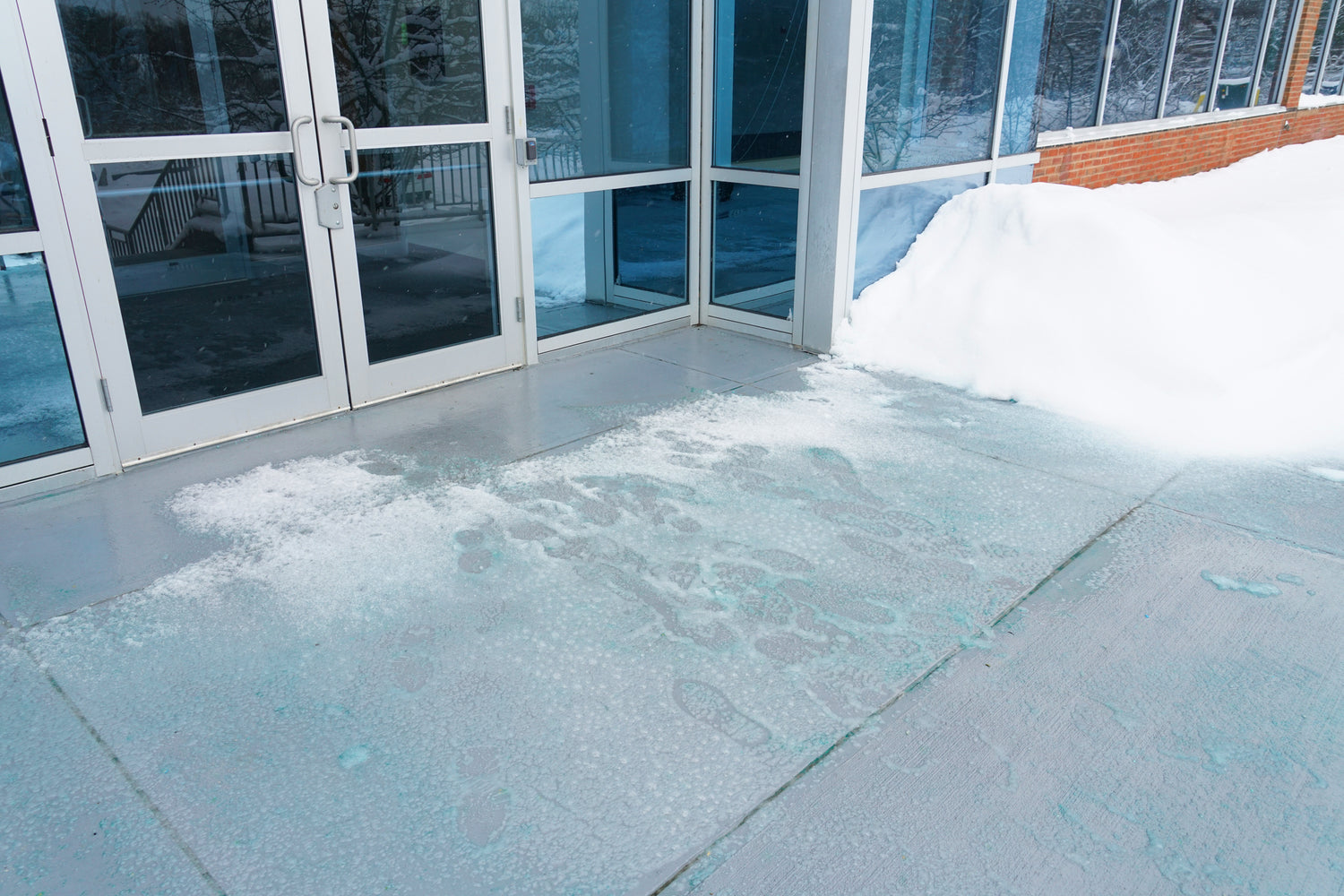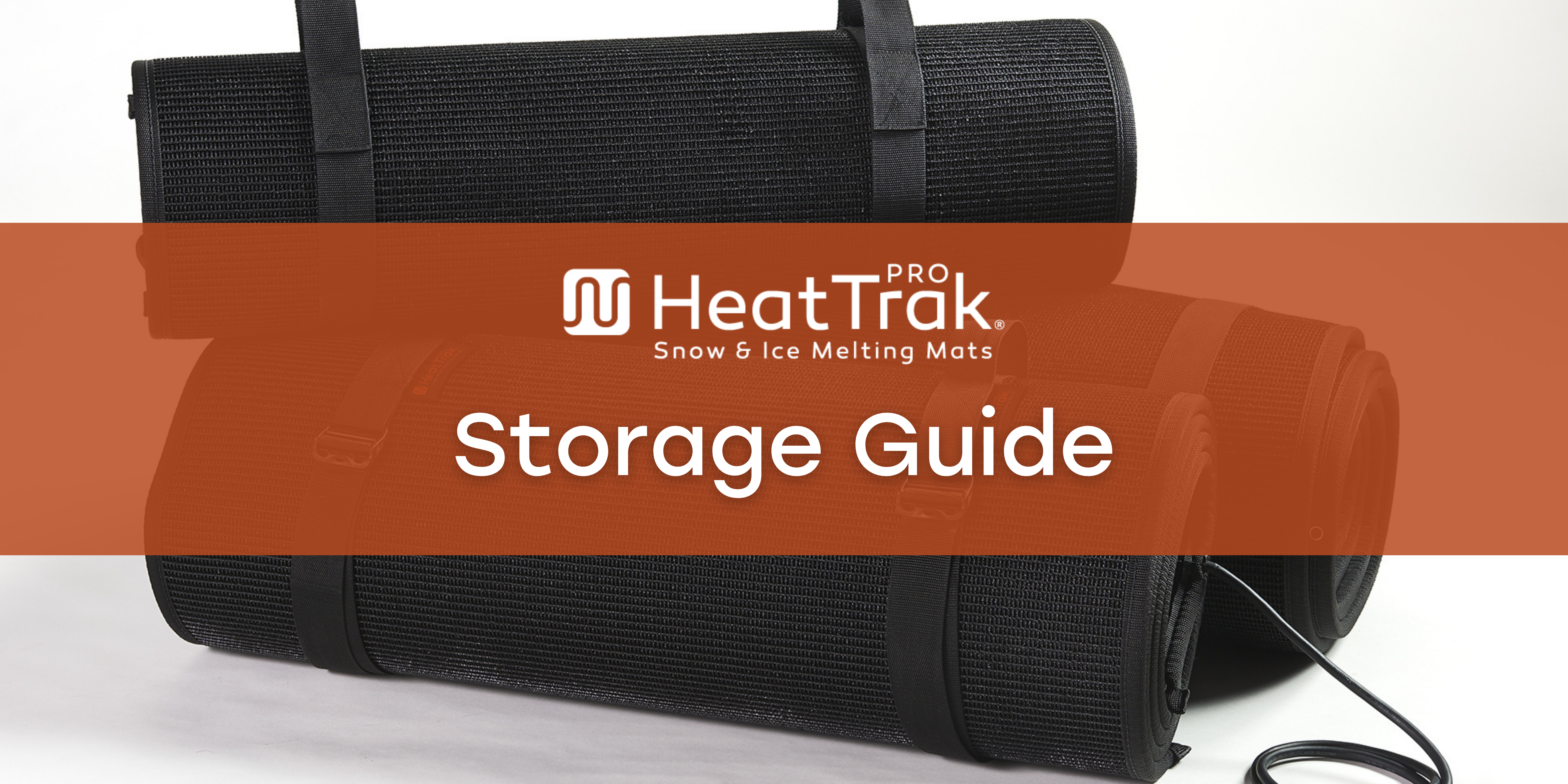Navigating the challenges of winter weather is crucial for businesses to keep operations smooth and ensure the safety of employees and customers. While salting is a common method for de-icing commercial walkways, understanding the optimal timing and techniques for its application can significantly boost its effectiveness. Additionally, we'll look at how HeatTrak PRO snow & ice melting mats can revolutionize your approach to winter safety.
The Importance of Timing in Salting
Effective ice management on commercial properties begins with the timing of your salting operations. Applying salt before a snow event, a tactic known as "anti-icing," can prevent ice from bonding to the pavement, making it easier to manage once the snow begins to fall. This proactive approach not only ensures a safer environment but also reduces the amount of salt needed, thereby lowering costs and environmental impact.
However, effectiveness varies with temperature. Most de-icing salts are less effective under 15°F (-9°C). For commercial properties, it is essential to choose a de-icing agent suitable for your specific climate and to monitor the weather closely to time your applications effectively.
Post-Snowfall Salting Strategies
If pre-treatment isn’t possible, it remains critical to address icy conditions promptly after snowfall. Clearing snow before applying salt helps the salt work directly on the ice, preventing re-freezing at night, which is often the cause of hazardous black ice. For businesses, maintaining clear, safe walkways during operating hours is not just a safety measure but also a legal responsibility to prevent accidents.
Environmental and Financial Considerations
For many businesses, the environmental impact of salting is a significant concern due to the potential harm to nearby vegetation and waterways from runoff. Utilizing the least amount of salt necessary to achieve safety can mitigate environmental damage and reduce material costs. Alternatives such as sand can also be used to provide traction without the chemical impact of salt.
Introducing HeatTrak PRO Mats
An innovative alternative to traditional salting is the HeatTrak PRO series of commercial snow & ice melting mats. Designed for high-traffic areas, these mats maintain clear, dry paths by melting snow and ice on contact. Ideal for entryways, loading docks, and walkways, HeatTrak PRO mats offer a dependable solution that keeps your property safe and accessible.
Advantages of HeatTrak PRO Mats Over Traditional Salting
Switching to HeatTrak PRO mats offers numerous benefits for businesses:
- Continuous Safety: These mats provide consistent, dependable surface heating, ensuring walkways remain clear without the intermittent application of salt.
- Cost Efficiency: HeatTrak PRO mats reduce the need for repeated salt purchases and application labor, offering long-term savings.
- Reduced Environmental Impact: By eliminating the need for chemical deicers, these mats are a more environmentally considerate option, helping businesses maintain greener operations.
Conclusion
Determining the best time to salt commercial walkways is critical for maintaining safety and operational efficiency during the winter months. However, for businesses looking for a more effective, economical, and environmentally friendly solution, HeatTrak PRO snow & ice melting mats present an excellent alternative. As winter approaches, consider incorporating these innovative mats into your winter safety protocols to enhance your property's safety and accessibility.


